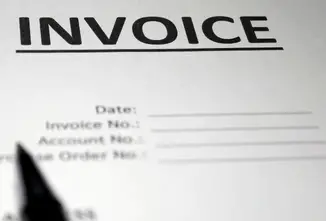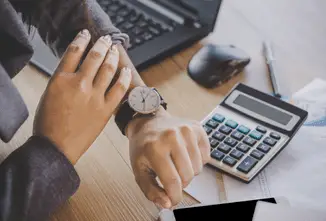Double invoicing is when you duplicate invoices and offer a customer two invoices for the same goods or services provided. The invoices may even have the same purchase order number, date, and invoice number, making it clear that they were received at least once before.
This can be a common occurrence in invoicing as a form of fraud or mistake. The company receiving the invoice is at risk of paying the same invoice twice, and this would be possible if the company receives many invoices regularly.
Some dishonest individuals may wish to take advantage of a busy company and keep making double invoicing to make money quickly. This is fraud, and you will be liable if caught.
Is double invoicing money laundering?
Yes. This is because Money Laundering is simply a process that seeks to disguise the proceeds of a crime by using what appears to be a legitimate transaction. It is the misrepresentation of prices, quantity, and quality of goods that have either been imported or exported.
A trade-based money laundering will include the following;
Over or under-invoicing
The main element, in this case, is the misrepresentation of prices for goods and services to transfer the additional value to the importer and exporter.
Multiple invoicing
This is a technique whereby the seller will create multiple invoices for the same transaction, which justifies multiple payments. It employs different financial institutions and makes the additional payments much harder to detect.
Over or under shipment
This refers to shipping more or fewer goods and services. The main element is misrepresenting the quantity of the goods shipped.
False description of services and goods
This is where the quality of goods and services are misrepresented to create a false narrative of what they are.
What is invoice fraud?
This is when someone purposely invoices their customers more than they should. It causes their customers to overpay for the goods delivered or service provided. Invoice fraud can take many different forms.
For example, forged invoices. This is an invoice that has been created, then altered to contain some false information in order to obtain the money that is not associated with any real sale. It is a scam.
False invoicing is another example, and it is a situation whereby a business sends out an invoice to a customer to pay for goods or services that the customer never purchased. This, they know full well.
False invoicing could also be when an independent contractor or an employee in a company submits a timesheet invoice to a client to charge them for services that were never rendered.
All these are fraudulent activities.
What are the consequences of invoice fraud?
Invoice fraud is a criminal activity and can lead to some very serious legal implications. There are penalties for this kind of crime, which depend on who committed the fraud and whether the case is a criminal or civil matter.
If your business is taken to civil court for invoice fraud, you will probably pay some sort of monetary damages to the prevailing party, which will compensate them for any losses they may have incurred due to the fraudulent invoice.
You will also be required to pay some more money in punitive damages and any other additional damages the court will see fit.
On the other hand, if you are charged in a criminal court and convicted, you may be required to pay criminal fines, and you could probably serve some jail time as a result of the criminal activity. In these cases, the rule of thumb is that you should pay an amount that is higher than what you stole.
Additionally, if the company has committed invoice fraud to avoid tax penalties, they may be punished and fined some more.
Invoice fraud: Who is liable?
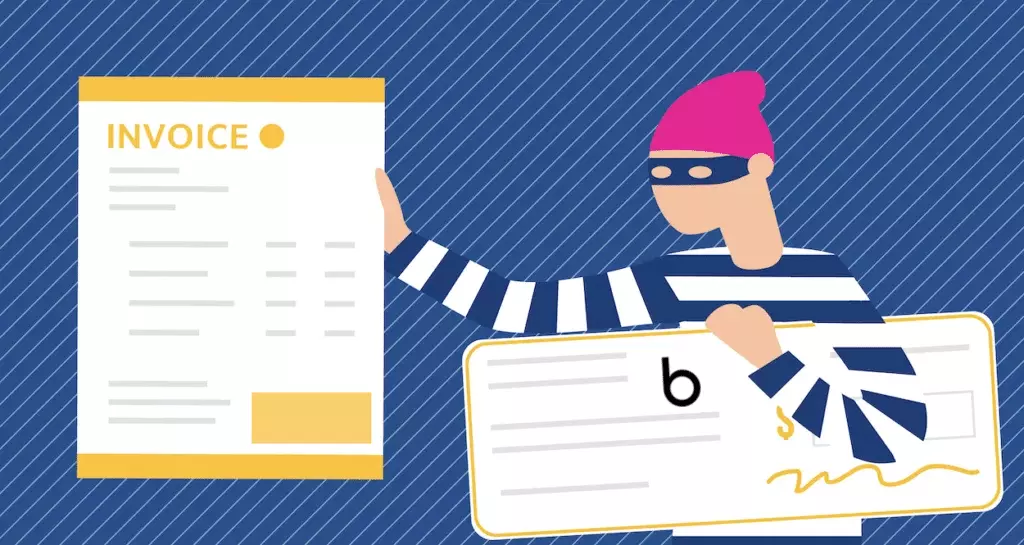
Generally, the person who committed the fraud will be found liable for their actions. If someone in your company ordered a fraudulent invoice, they would face legal repercussions of their actions if they are caught.
Companies are, however, not exempt from liability and are required to do their due diligence to ensure that their employees do not send out fraudulent invoices that put their companies at risk.
I have given out some tips that any company can use to protect themselves from invoice fraud and remain vigilant below.
What is a fictitious invoice?
A fictitious invoice contains transactions that did not take place. The main purpose of such an invoice is to extract money from a business, probably to fund the directors. It can also reduce VAT liabilities in the company, where there isn’t a reverse charge system.
Related article: What is an invoice?
Is double billing illegal?
Yes. In Law, double billing is where a lawyer charges the same time spent working to two clients hourly. This is prohibited, and it is overcharging. This is because the amount of time spent working on any client’s work is less than what was billed to the client.
Partners and associates in large law firms will often face this challenge as they are under pressure to perform. They would wish to do this to reduce overwork.
Is it legal to change an invoice?
Regardless of how careful you are when preparing invoices, sometimes you are bound to make a mistake, such as wrongly typing the customer’s address, forgetting to apply the discount, or including the wrong products on the invoice.
Once the invoice has been sent out with the wrong information, you cannot edit it unless you use a credit note.
Why should you always have a credit note?
As noted above, a credit note is a legal document used to make cancellations or refunds. It can be used to show the buyer’s reduction of what is owed or the seller’s reduction of sales.
An invoice is a legally binding document, and if you need to make any changes to them, then there are laws concerning this. When you notice there is a mistake on an invoice, the only way you can correct this is by using a credit note.
You must cancel the invoice using the credit note and then issue a new invoice. Therefore, the credit note indirectly “pays” the erroneous invoice, so no payments are outstanding. Therefore, you would be required to process the credit note as payment for invoicing, balance your books, and send it to the customer, so they know that their debt has been cancelled.
You can then issue a new invoice.
A credit note is the right document to use when a refund is deemed necessary. One of the reasons goods would need to be returned would be if they were received faulty or damaged.
In this case, a credit note would be issued to show that a refund took place.
You may also issue a credit note to a customer if they decided to return the product they purchased to show that the money was refunded.
In most of these instances, the money will either be given back to the customer, or their account is credited with the specific amount in the credit note to balance your accounts.
Alternatively, if you are only refunding a portion of the original sales, then the credit note would have to be edited to show the portion refunded and the reason for the partial refund.
Even when money hasn’t been exchanged already, the credit note will be needed to cancel the “what is owed” so the books can balance.
Before payment is made, the customer could change their mind about the purchase and would wish to cancel it, which is allowed.
You may also be unable to supply the goods ordered and wish to cancel the transaction before payment is made.
In both of these cases, the credit note is the main document in use here, and it must be sent to the customer to inform them that they no longer owe you anything.
Conclusion
Sometimes Invoice Fraud may be beyond your control as the business owner, but the Financial Fraud Action of UK [1] recommends you to do the following to try and protect yourself against fraud;
- Ensuring that the staff responsible for processing supplier invoices and have the power to change any bank details are always vigilant. They must always check for any irregularities in the invoices, including any changes in the names and addresses of the suppliers.
- Any changes made to the supplier’s financial arrangements must always be verified with the specific supplier first before adding these changes to the files and supplier accounts. Do not always just hit reply to an email that requires such changes.
- When an invoice is paid, it is always good practice to inform the supplier of the details, including the bank account where the payment was made.
- Always check the company bank statements carefully. If you find any suspicious debits, they should be reported to the bank immediately.
- If you are ever suspicious about a request, it’s wise to call back. Don’t use the on-file contacts to see whether they are genuine or not. They might have been changed too.
- Any fraud perpetrators usually perform extensive research of the suppliers in advance, and it would be wise for your company to remove this information from your website.
The Law says that the person who committed the fraud is liable and not the company. However, in an actual sense, if an employee is convicted or found liable for Invoice fraud, your company’s reputation

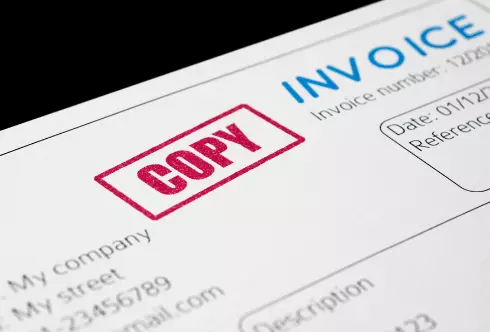
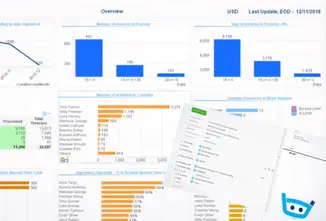
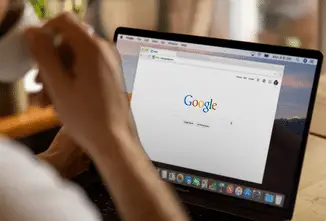
![How to write past due invoice emails that work [+ tips & templates] 4 How to write past due invoice emails that work](https://brodmin.com/wp-content/uploads/2022/04/How-to-write-past-due-invoice-emails-that-work.webp)
![How to invoice international clients [+ 10-point checklist] 5 Invoicing international clients](https://brodmin.com/wp-content/uploads/2021/10/Invoicing-international-clients-0.webp)
